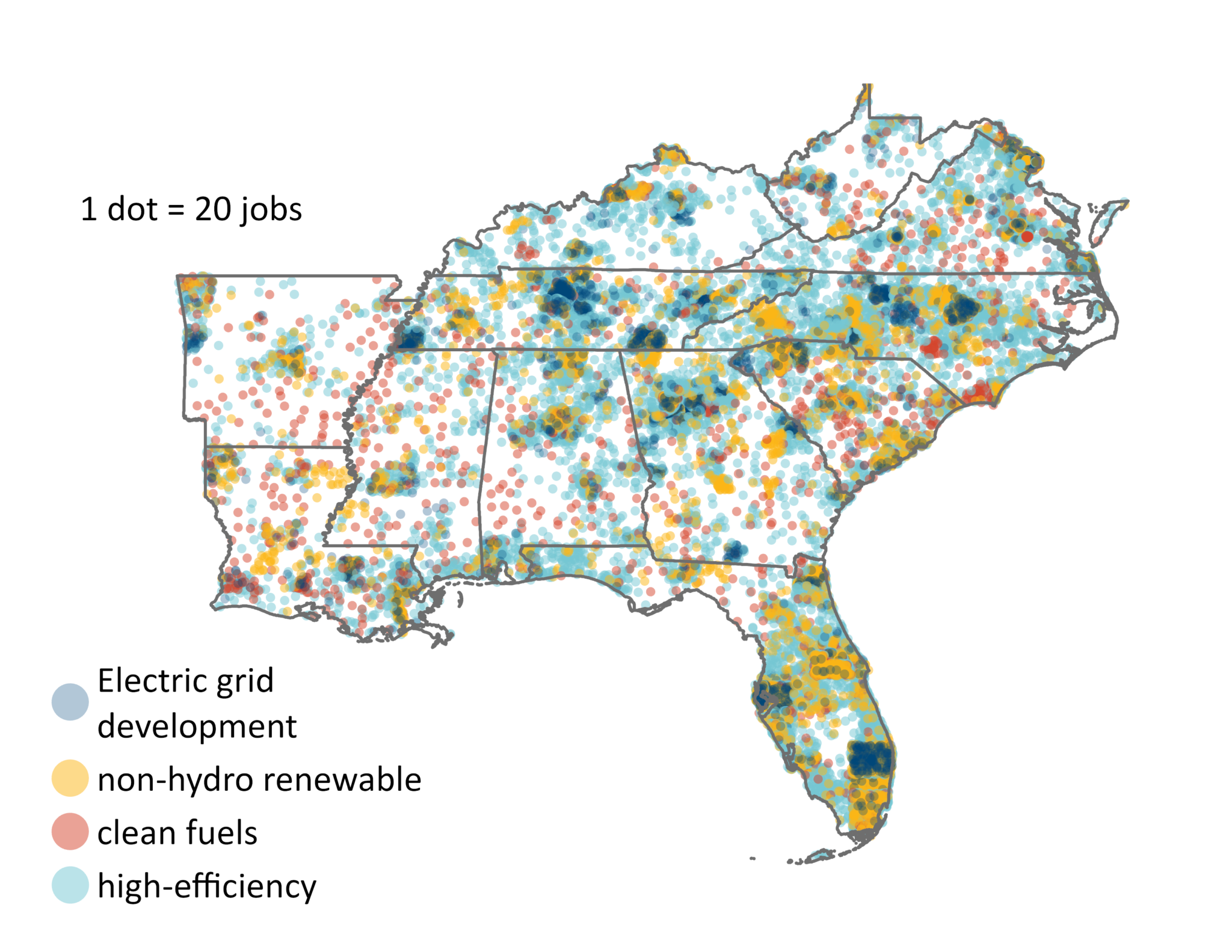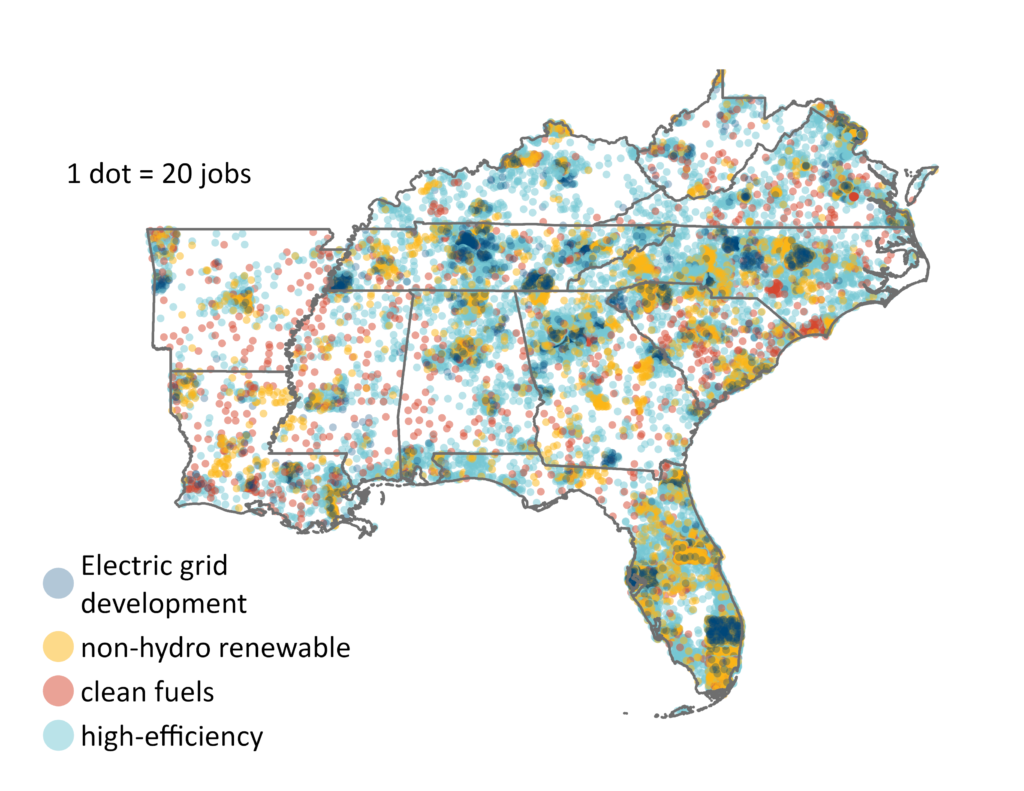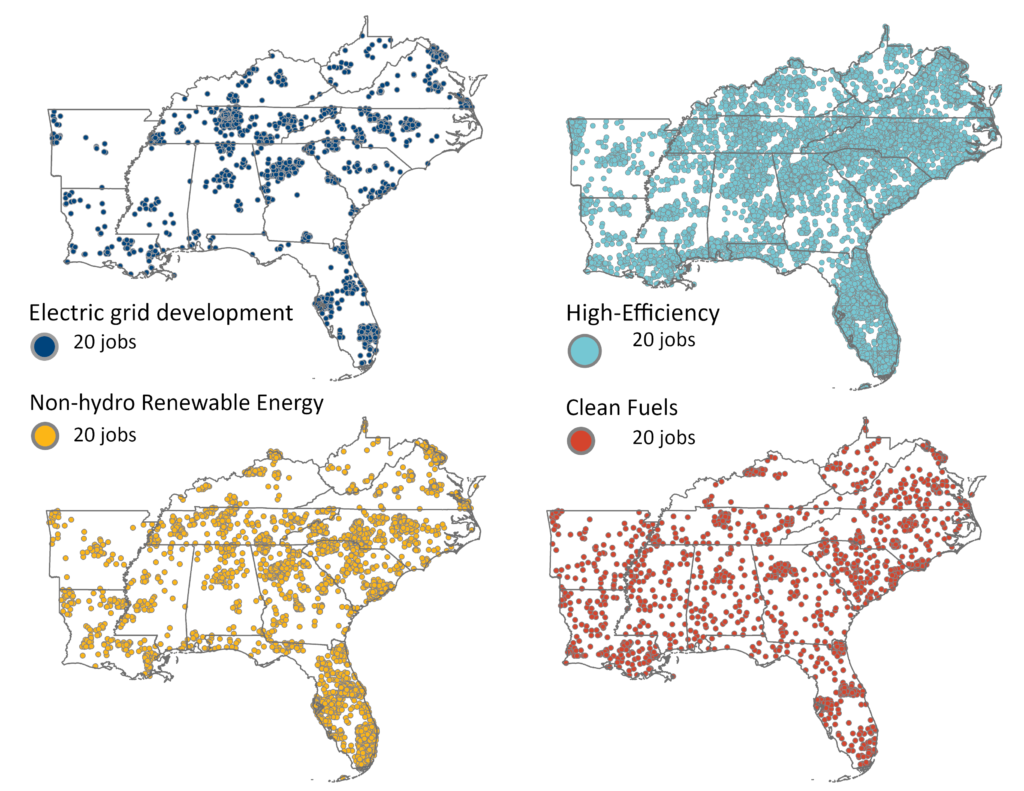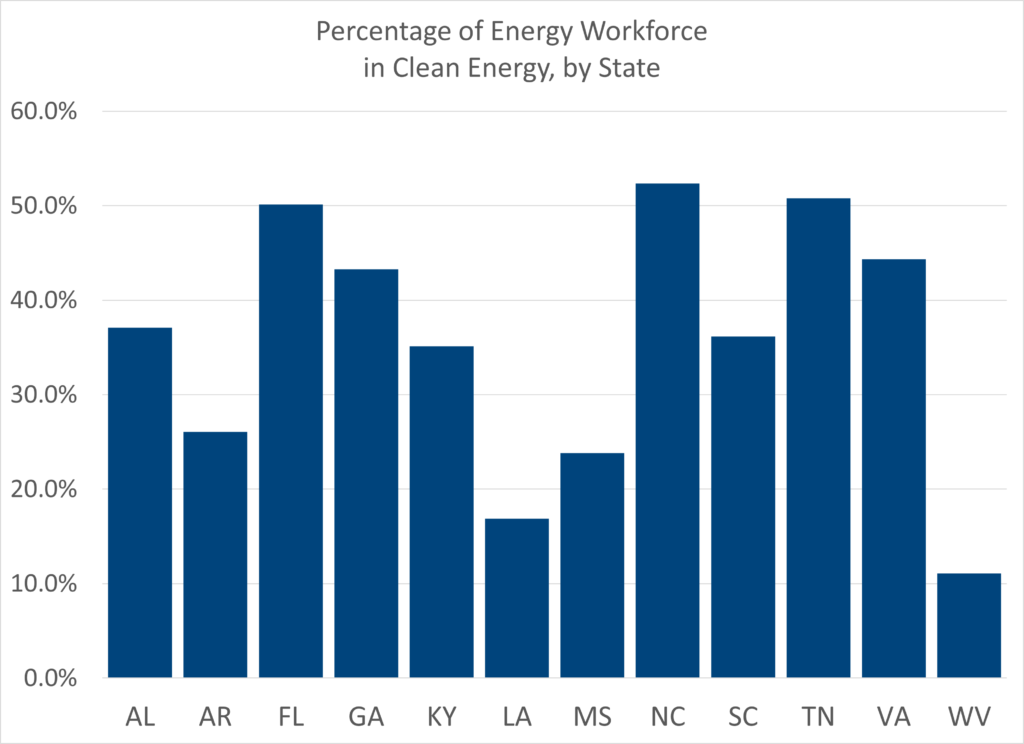November Map of the Month

By Amy Lovell

Source: United States Energy & Employment Jobs Report (USEER)
Over the past few years, a “Battery Belt” has emerged in the Southeast, where massive investments in clean energy and cleantech production are reviving the region’s manufacturing economy and creating thousands of new jobs. These jobs have rightly been at the forefront of regional and national economic development efforts and planning for the energy transition. What has been less prominent in these discussions is the region’s already-thriving clean energy workforce, which spans a myriad of job types and virtually all parts of the region.
This month’s map uses data from the United States Energy & Employment Jobs Report (USEER) from 2023 to explore the extent and impact of the clean energy workforce in the Southeast. It illustrates that clean energy is a significant source of jobs in most counties in the region, and calls attention to how diverse these jobs are across sectors and job type.
Clean energy jobs are an increasingly large portion of the energy workforce nationwide and provide 39% of the energy jobs spread across the Southeast. 87% of counties in the Southeast have a workforce of ten or more jobs in clean energy, which exceeds the national average of 83%. The region’s high-efficiency workforce is the largest and most geographically dispersed in the nation: 73% of counties have a workforce in efficient lighting, energy STAR, high-efficiency heating ventilation and air conditioning (HVAC), and advanced materials and insulation.
Of the 1.2 million non-automotive energy jobs in the Southeast, 474,613 jobs (39%) are in the clean energy workforce categories of 1) non-hydro renewable power generation, 2) electric grid modification, 3) high-efficiency or 4) clean fuels. The 340,000 high-efficiency jobs represent the largest fraction (72%) of this workforce. Nationally, 41% of energy jobs are in these clean energy categories, with 64% in high-efficiency jobs. Renewable energy employs fewer workers (40%) in the Southeast than nationwide (54%), but has been experiencing consistent growth, in part due to significant efficiency and clean energy investments in the region.



The percentages of the energy workforce in clean energy vary across Southeastern states. Florida, North Carolina, and Tennessee have over half of their energy workforce in clean energy, while Louisiana (17%) and West Virginia (11%) have the lowest fractions. Rural areas and regions with a significant Black, Indigenous, and People of Color (BIPOC) population have the greatest potential for job growth.
In the fuels workforce, petroleum, natural gas and coal comprise the majority (85%) of workers, with clean fuels including woody biomass and corn ethanol making up a combined 15% of the fuel workforce, comparable to the national average. Georgia (32%), North Carolina (41%), South Carolina (49%), and Tennessee (32%) have the highest portions of the fuel workforce in clean fuels.
From 2020-2023, solar and wind energy jobs grew from 35% to 40% of the power generation workforce, with North Carolina and Georgia crossing 50% of workers in renewable power generation. In the same period, the national workforce in renewables only grew from 53% to 54%, so the Southeast is realizing some potential for growth for workers in this area.
Transmission, Distribution, and Storage (TDS) jobs in the Southeast are primarily in traditional TDS, with 11% of this workforce in storage, smart grid, microgrids, and other grid modification work. Tennessee has by far the largest fraction of the TDS workforce in this category, at 26%.
While the emergence of the “Battery Belt” and transformational investments in clean energy manufacturing are key factors shaping the region’s economy growth, the Southeast has a seasoned and thriving clean energy workforce. Though jobs in renewable energy and clean fuels may be more easily recognized as part of the clean energy workforce, it also includes many jobs improving building efficiency and innovating our electric grid. This workforce has been expanding more rapidly than in the rest of the nation, and it provides opportunities for people with a range of skillsets living in virtually any community in the region to participate in the clean energy economy.



